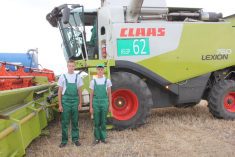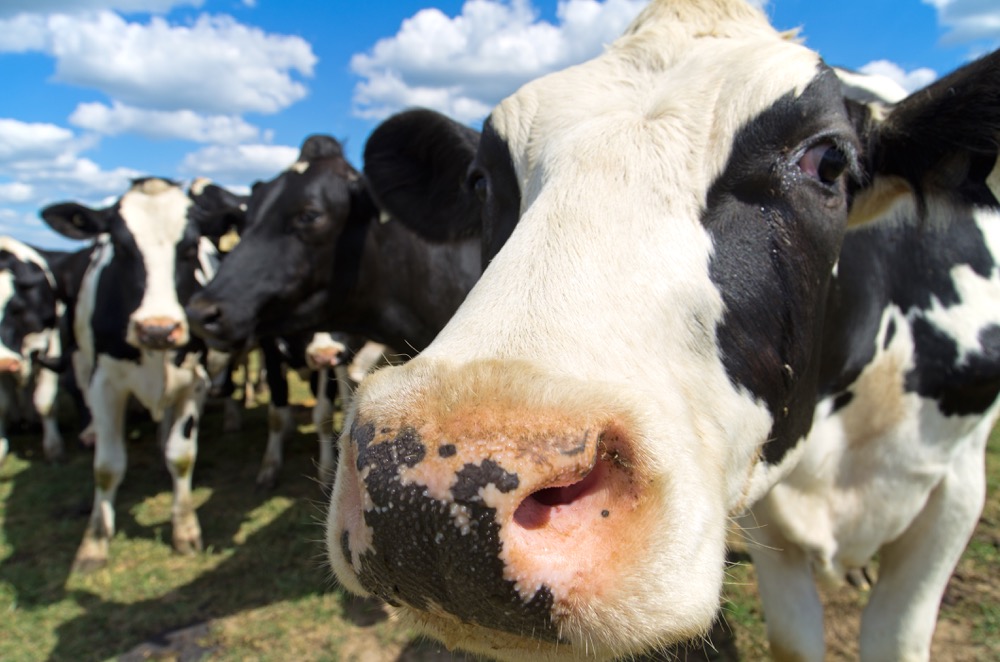There is a pair of little yellow rubber boots — or wellies as they are called in other countries — sitting on my desk.
They are a gift from fellow scholar James Chapman, who is studying and speaking out about farm safety around the world. James lost his arm in a farm accident. The idea of giving folks little yellow wellies as a gift is to remind them to ask the question: Who will fill your boots?
Yellow wellies are worn by boys and girls, men and women on farms globally. The empty boots are part of the farm safety promotion of yellowwellies.org, which is the U.K. voice for farm safety.
Read Also

Farm equipment sales sector sees significant structural changes
Farming equipment sales have been declining for a number of years now, and one industry professional believes structural changes in the industry are needed to curb that trend.
As it is now harvest and we once again remember those whose lives have been impacted by a farming accident, it is a good time to Sit down and Talk about Operating Procedures (STOP) on your farm, especially in terms of where children should or should not be. Everyone loves the farm, but many are now large industrial sites with equipment that children should not be riding in, climbing on, or playing around. And on ranches and feed yards, there are so many animals that they could easily be lost or crushed.
- More with Brenda Schoepp on the Alberta Farmer: We need to count our blessings – and take advantage of them
I recall when I managed our feed yard that my young children often hung around on the fence in an enclosed area. One day I was sorting out a pen of 500 head when I noticed my daughter was missing from the safety of that area. I could not see her or hear her and then — among the 1,400-pound steers — I saw the tip of a stock whip weeding its way through the middle of the mob.
I will never forget my absolute sense of panic and how I was gripped with fear at that moment. Quietly I approached the area where she was walking — a little child not even up to the belly of those beasts — and was able to safely remove her from the danger. I have never forgiven myself for the error, never again allowed the children to watch unattended, and have thanked God repeatedly for protecting this tiny beautiful child in her little blue coat — and yellow wellies.
Although children love the farm, it is our responsibility to protect them and to say ‘no’ at times.
I recently spent a day with fellow Nuffield scholar Randall Wilksch as he travels the world asking: Why are there not more women in grain farming?
It is a good question as women are excellent farmers and equipment operators. The discussions have been varied, but one area that strikes me is that we must provide for girls and women operators a safe and nurturing environment. This was a key learning in my own study on women in agriculture. Women may not favour farming enterprises where their children are at risk.
Tractor rollovers take the lives of women on the farm, and children are lost to rollovers, gunshot wounds (playing with guns when left alone), drowning, suffocation, and quad accidents.
David Sullivan is an agricultural safety specialist with Ag Safe in British Columbia. He knows the cost of quad rollovers to families on the farm and has developed an attachable quad bar to mitigate the rollover risk. It may save a life but there also should be other safety measures in place, such as the use of helmets.
When you walk into a farmhouse, there will be farming caps and cowboy hats littering the front hall. My question is: Where are the helmets?
When a little Alberta boy was bucked off his horse in a pen of cattle, the tearful father pointed to his helmet, cracked in half and held his son close. He was so grateful they had started young riders with helmets on their large farm. The same space allowed for other hats and caps in the house should be occupied by helmets so children think it is natural and ‘cool’ to put one on.
This year during its October convention, the Canadian Agricultural Safety Association will focus on keeping children safe on the farm with a focus on the prevention of injuries in young adults and children. Why? Because in eight out of 10 times, Canadian children are fatally injured on the farm by someone else and 10 per cent of the time these children are visitors. Who is responsible?
Most certainly children can be briefed and taught what not to do — and still in a moment of fun, excitement or panic be hurt. They are quick and fearless individuals who need our constant supervision or guidance.
There is a fine line on farms between teaching skills and farm labour and they should not be exposed to danger for the farm. Kindly remember that at the end of the work day — when the harvest haze hangs over the golden fields and the animals are tucked to bed — all that matters is that each seat around the table is filled and that there are wiggling feet for all the boots in the front hall, Mom and Dad included.
When we were expecting our first grandchild, I bought a tiny pair of yellow wellies. They stayed on my shelf until she was old enough to walk. They served as a reminder to slow down and to keep her safe, to pray for her health, and never assume that a little child would not walk into the path of danger.
As those boots pass from sister to sister, the sight of them still takes me back to the moment when I realized my daughter was missing. I could have prevented that. And most certainly had she been lost, those little yellow wellies would have echoed in their emptiness… forever.















